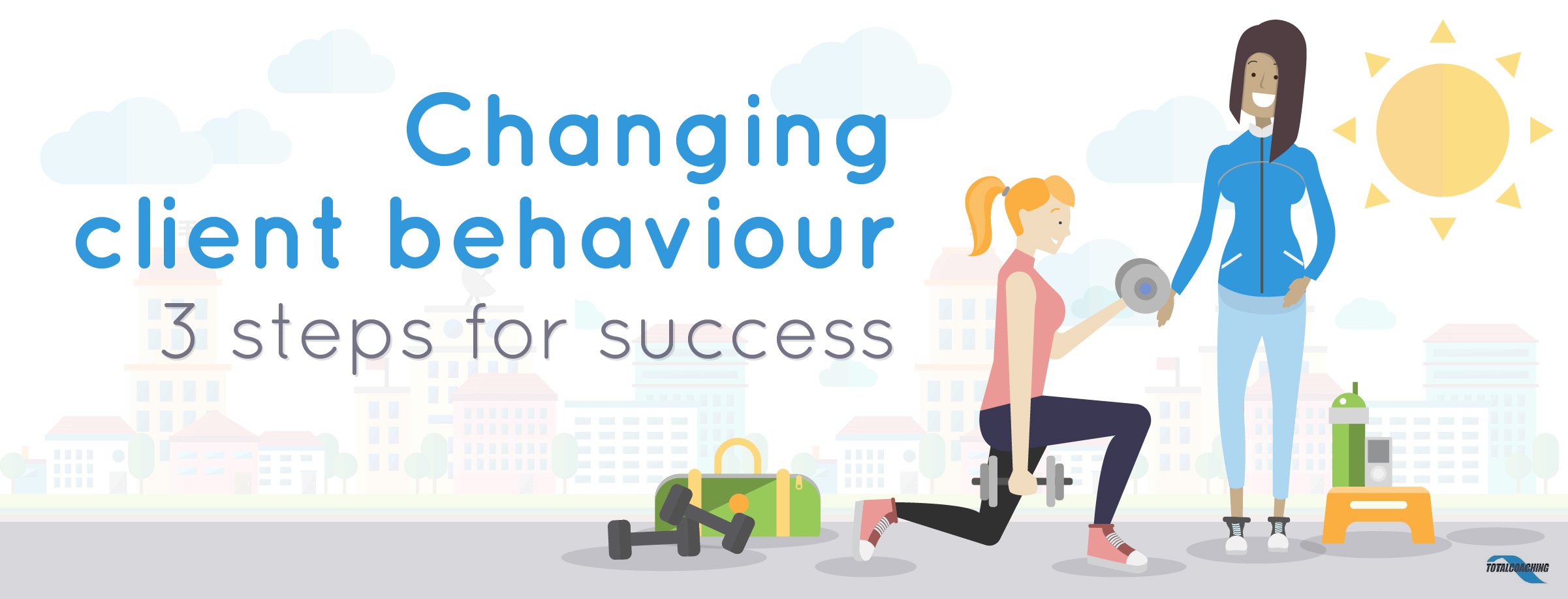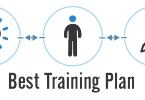‘Abs are made in the kitchen, but glutes are made in the gym’.
The industry has long debated the relative importance of nutrition versus exercise when it comes to improvements in health and aesthetics (for the record, both are clearly key no matter what your goals), but there’s one key point that until recently we’ve overlooked:
Those doing the debating are health and fitness enthusiasts.
We’re the trainers, ‘gym bunnies’ and athletes who love exercise and nutritious food. We’re the motivated ones who don’t need any convincing. What about our clients? Or the people who aren’t even working with us yet?

Most people don’t share our exercise and health mentality, as demonstrated by a growing number of studies and reports. I remember reading about a survey a few years ago which reported that, even if they knew it would increase the length of their life, 47% of people in Britain would not be motivated to do more physical activity.
“Brits would rather die than do exercise” was the rather sensationalist headline, but it illustrates the point - you can be the most technically competent and qualified personal trainer in the world, with intricate knowledge of the latest exercise techniques and cutting edge nutrition research, but if you can’t get your client to actually do their program or follow your advice they won’t get results.
It's your job to help clients get results, and this means building new habits. How can you actually change client behaviour?
It’s strikingly obvious, and we’ve known it all along, but too often we’ve wondered why clients haven’t made progress, perhaps blamed them for not being motivated, or been too quick to say, "Well all I can do is tell them what to do." You can lead a horse to water and all that…
Let’s take a step back. What’s your role as a personal trainer?
Isn’t it to support our clients to achieve their goals in the most effective way we can? There is still a perception of personal training being all about tailored exercise plans, which, although a marked step forward from the stereotypical image of a muscle-bound young man shouting at someone whilst they sweat away on a treadmill, is quite a narrow view. Things have moved on.
The main role of a personal trainer is to help a client change behaviour for improved results.
The reality is that it’s about addressing all the areas necessary to reach those goals; fundamentally that’s nutrition, other lifestyle factors such as sleep and stress, as well as exercise/physical activity. More specifically, it’s about effective behaviour change in those areas.
The key to success is therefore not just technical knowledge, but first and foremost it's about a sound understanding of client psychology and motivational skills to help your clients actually make the changes they need to.
This is why the term "coaching" has become a buzz word in the industry - simply instructing isn’t as effective when it comes to changing behaviour.
Personal trainers are much more than "instructors" - We are success "coaches"
The "Fitness" Industry vs. the "Change" Industry
In today’s fitness world then, the responsibility for motivating clients over the long term, not just in the hour you’re with them, has to largely lie with the PT.
Indeed, the very term "fitness" professional could be considered a slightly misleading title in relation to what we are trying to achieve – fitness and exercise just happens to be the more visible side of the role.
Behaviour change skills are the key to ensuring the technical knowledge trainers have is successfully translated into results for clients, and this is something the health and fitness industry is embracing more than ever before. PT courses and qualifications should place more emphasis on this vital topic and we’ve seen the trend towards this over the last couple of years.
Behaviour change is all about helping clients find motivation, focus it in the right direction, and altering their mindset so that new habits are formed.
Lacking the motivation to exercise? Try working-out with a friend.#mondaymotivation pic.twitter.com/tmxHqWM9cE
— Michael Clarke (@Mr_Mike_Clarke) March 14, 2016
Nutrition and exercise knowledge is undoubtedly essential, but if you want to help clients reach their goals, help them change their minds – literally!
Behaviour change requires motivation in the right direction, leading to an altered mindset
So how do you do that?
3 Simple Steps that Will Lead to Behaviour Change in Your Clients
If you truly want to see your clients succeed, it's time to help them lock down new behaviours that will last long-term. Start by following these 3 steps:
1. Ask, "Why?"
We place a heavy emphasis on SMART goal setting in the fitness industry, believing that making targets crystal clear and defining a structured process to achieve them is the key to success. However if we don't find out the true motivation behind goals - the emotional driver - all other coaching strategies will fall short.
Possibly the most insightful question you can ask as a personal trainer is, "Why is that important to you?"
The most important question you can ask as a personal trainer: "Why?"
Clients will tell you their goal is to lose weight, tone up, get visible abs, etc, and they may even offer a more specific target to satisfy the SMART requirements such as "I want to run a 10k in under 50 minutes on June 5th." But we want to know why that's important to them.
Is it because it will give them more self-confidence? Will losing body fat help them avoid medical complications that affected a member of their family? Do they want be a role model for their children?
Often it requires you to ask the "why" question a number of times to really dig down into these hidden motivations. For example, "Why is it important to you that you have more self-confidence?"
Often the clients themselves may not have fully or consciously realized what their true motivations are. The result is you uncover powerful drivers that really push your clients buttons, making it easier to choose your coaching and support techniques, from the words and phrases you use to the resources you provide.
Even simply mirroring the language they use in the answers they give you will help build rapport, and the increased trust makes it more likely they'll adhere to the advice you provide.
2. Plan, Plan, Plan
You wouldn't get in your car and start driving without any idea of your destination or how to get there (at the very least you'd need to know what to input into your GPS). So once you've agreed a goal with your client and why they want to achieve it, create a roadmap working backwards from there so you know exactly what's required to reach it.
This should include both general behaviours along with reasons for them (e.g. "Eat more vegetables to increase vitamin, mineral and fibre levels"), along with the individual, tangible actions and steps your client needs to take on a daily, weekly and monthly basis (e.g. "Eat a fist-sized portion of green leafy veg with every meal").
Depending on the level of guidance the client needs you may also need to go a step further and provide example meals and recipes. When you know exactly what you need to do in specific terms, it's much easier to actually do it.
3. Find Success
You'll likely have a huge list of behaviours and actions that your client needs to do to move them towards their goal. This can create a sense of overwhelm, which ironically may make them freeze and do nothing at all.
Never discourage anyone... who continually makes progress, no matter how slow. Plato #motivation pic.twitter.com/YLnFhBOm3U
— Roy Bennett (@InspiringThinkn) March 15, 2016
Instead, it makes sense to limit the number of things they need to put into action - perhaps as few as 3 at any one time. Some of the behaviours will be easier for them to do than others (in other words they'll have a high self-efficacy for them), so prioritise those. Perhaps they aren’t ready to add vegetables to every meal, but they feel confident they could go to bed half an hour earlier each night to get more sleep.
There is a limit to the number of new actions a client can work on. Start with no more than 3
By focusing on what your client can do, rather than what they can't, not only is there more chance they'll complete the actions, the sense of success this creates is hugely empowering and will motivate them to keep progressing towards their goal.




